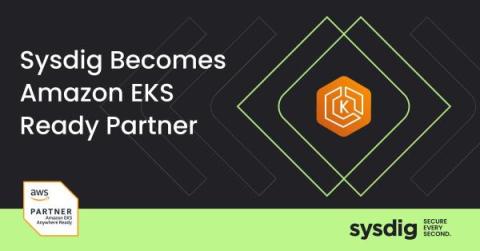Sysdig Achieves the Amazon EKS Ready Designation
Today Sysdig has been recognized for achieving the Amazon Elastic Kubernetes Service (Amazon EKS) Ready designation from Amazon Web Services (AWS). This specialization recognizes that the Sysdig cloud-native application protection platform (CNAPP) is validated by AWS Partner Solutions Architects to integrate with Amazon EKS and Amazon EKS Anywhere. Amazon EKS Ready Partners like Sysdig offer AWS customers the ability to customize the Kubernetes solution to fit their business needs.











